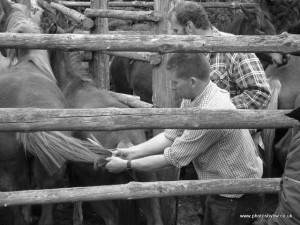M – A-Z of Commoning and the New Forest
Mast
Mast is another word for ‘pannage’ (see P).
Marl
Marl is another of the common rights in the New Forest. Marl is a type of limey clay that can be spread on poor ground to make it more fertile. The right of marl allows a commoner to dig marl from the Forest to use as a fertiliser. Nobody seems to use the right any more, but you can still see pits in the Forest where marl used to be dug out.
Marking fees
 Marking fees are annual charges that commoners pay for each of the animals they keep on the Forest. The fees contribute towards the costs of managing the Forest. They’re called marking fees because the Agisters mark each animal to show it’s been paid for.
Marking fees are annual charges that commoners pay for each of the animals they keep on the Forest. The fees contribute towards the costs of managing the Forest. They’re called marking fees because the Agisters mark each animal to show it’s been paid for.
The Agisters mark ponies and cattle by cutting their tail hairs in a certain way. A year later, when the fees have to be paid again, the tail hairs will have grown out, so the Agisters can mark the animals again.
One of the jobs of an Agister is to collect the marking fees in their area, and to make sure that commoners don’t turn out animals without paying. The records of marking fees are kept by the Verderers (see V), so it’s possible to see how many cows, pigs, ponies and sheep have been turned out over the years.

